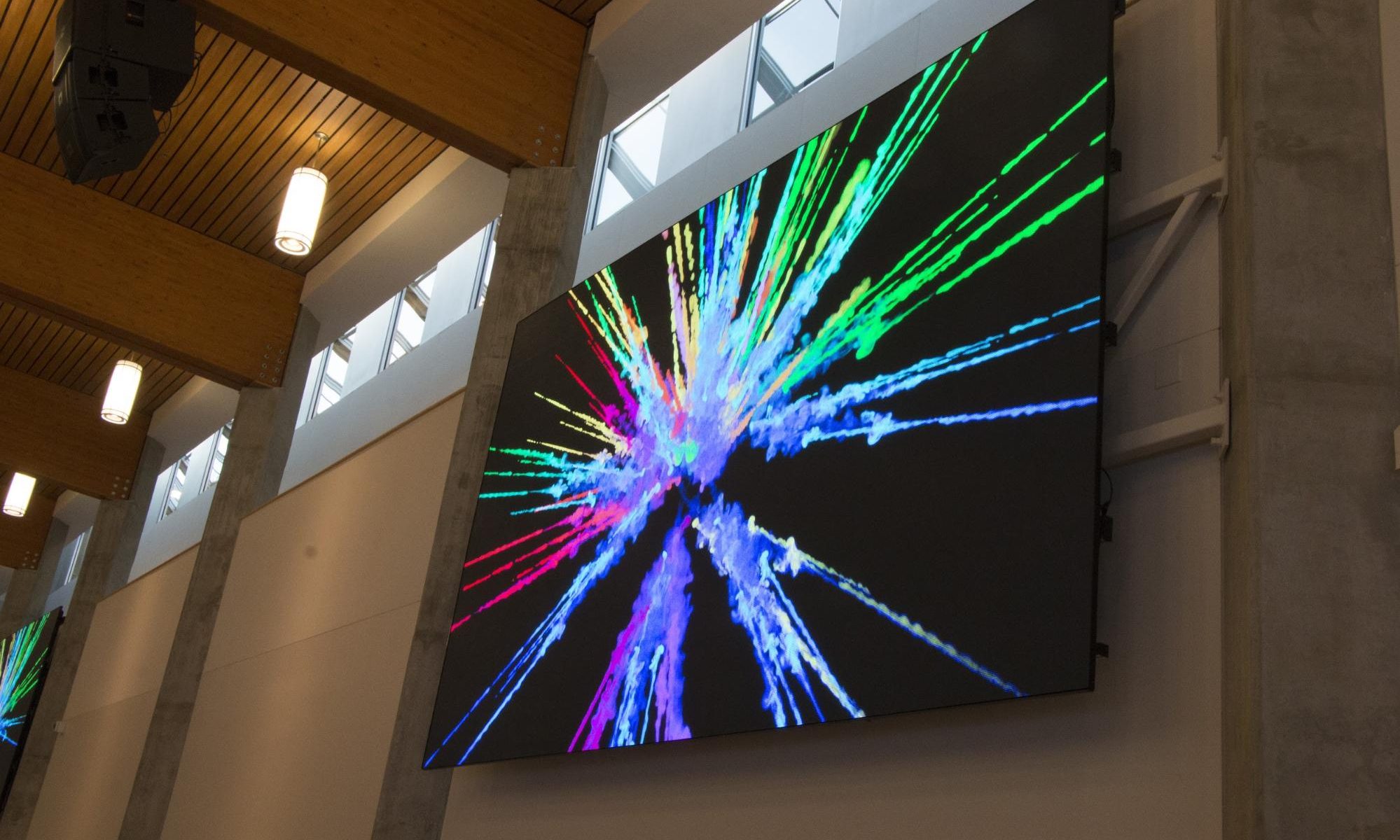LED Bible is the source for everything you need to know about LED displays. This month’s topic is pixel pitch. We’ll tell you what it is and how it works.
Pixel Pitch Definition
Pixel pitch refers to the vertical and horizontal distance between individual LED pixels on an LED media display, otherwise referred to as an LED video wall or LED screen. A common unit of measurement for pixel pitch is millimeters (mm).
The term is often used in the following context “The pixel pitch on this LED media display is 4mm.”

How Does Pixel Pitch Work?
One of the steps when purchasing an LED display is deciding which pixel pitch to use. When choosing a pixel pitch, it comes down to a balance between budget and necessity. The decision is generally supported by an experienced audio-visual integrator.
Pixel pitch is directly correlated with image clarity and the cost. As the pixel pitch goes from 4mm to 2mm the number of pixels on a single LED cabinet is 4 times larger. This means the image quality is 4 times higher resolution. It also means the price is 4 times higher. Therefore, the decision on pixel pitch needs to be strategic and take into account the average viewing distance for people looking at the display.
Video Explanation For How Pixel Pitch Works
The video below gives a complete visual representation to explain pixel pitch. This video was created by LIGHTVU to help make the concept of pixel pitch perfectly clear. This should be everything needed to understand pixel pitch. If you would like to read on, we continue the discussion below.
Choosing The Right Pixel Pitch
To find the right pixel pitch, project planners must first define the minimum viewing distance in feet or meters. This requires careful consideration and attention to the average distance people will be viewing the video wall or large format LED display from. Once the minimum viewing distance is determined, project planners can consult the following chart:
|
Optimal Viewing Distance |
Appropriate Pixel Pitch |
| 8ft | 2.5m |
1mm |
|
12ft | 3.75m |
1.5mm |
| 16ft | 5m |
2mm |
|
20ft | 6.25m |
2.5mm |
| 24ft | 7.5m |
3mm |
|
32ft | 10.0m |
4mm |
|
48ft | 15m |
6mm |
| 64ft | 20m |
8mm |
|
80ft | 25m |
10mm |
| 128ft | 40m |
16mm |
The chart above is to be used for recommendation purposes only. Reach out to a sales representative for all LED projects to ensure your creative vision is displayed on a pixel pitch that will be a perfect fit for your vision.

What If I Choose The Wrong Pixel Pitch?
If money is no barrier, go with the finest pixel pitch available as it’s the best display technology available today. You can’t go wrong by choosing too fine of a pixel pitch. Unfortunately this is not a luxury most people have. Budget is always a direct influence in any large format display or digital signage project. This is why choosing the right pixel pitch is so important.
Where LED displays go wrong is when budget conscious buyers opt for pixel pitches greater than what is recommended for respective minimum viewing distances. These LED displays turn out to be problematic because when the pixel pitch is too large content looks pixelated and low quality. This is the last thing wanted when purchasing LED displays.
Trust your audio-visual integrator when it comes to pixel pitch. Professional installers will know the minimum viewing distance to pixel pitch conversion. However, if they tell you any different than what the above chart outlines you should point your integrator to this article.

Word From The Wise On Cheap Fine Pixel Pitch
Truth of the matter is LED display technology is not cheap. With that said, when LED displays are used correctly it’s worth the investment. Some people will try to beat the system and find cheap fine pitch LED products overseas – all we have to say is good luck.
Let this be a piece of advice from an experienced team who has seen it all, taking the cheap do-it-yourself option when it comes to LED displays is a bad idea. You may get lucky and find a cheap LED display that lasts longer than a year. Soon enough, you’ll be stuck with a broken assembly of wasted aluminum and plastic with no support and no money back

Ask The Experts At LIGHTVU
If you’re unsure about the right pixel pitch to use for your LED project, CONTACT US now and we’ll point you in the right direction. Check back often for more helpful topics.
LED Bible is your best source for everything about LED displays.






 Your privacy is important to us, and we are committed to protecting your personal information.
Your privacy is important to us, and we are committed to protecting your personal information.